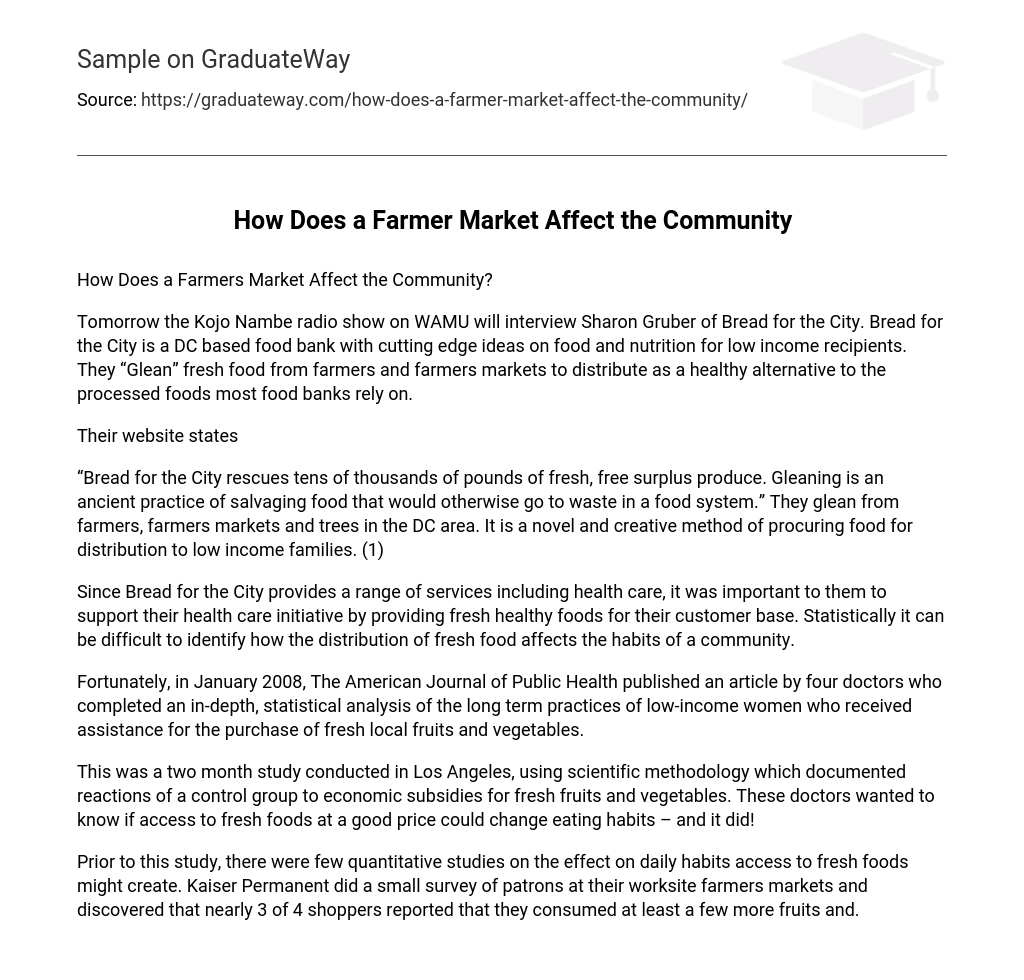How Does a Farmers Market Affect the Community?
Tomorrow the Kojo Nambe radio show on WAMU will interview Sharon Gruber of Bread for the City. Bread for the City is a DC based food bank with cutting edge ideas on food and nutrition for low income recipients. They “Glean” fresh food from farmers and farmers markets to distribute as a healthy alternative to the processed foods most food banks rely on.
Their website states
“Bread for the City rescues tens of thousands of pounds of fresh, free surplus produce. Gleaning is an ancient practice of salvaging food that would otherwise go to waste in a food system.” They glean from farmers, farmers markets and trees in the DC area. It is a novel and creative method of procuring food for distribution to low income families. (1)
Since Bread for the City provides a range of services including health care, it was important to them to support their health care initiative by providing fresh healthy foods for their customer base. Statistically it can be difficult to identify how the distribution of fresh food affects the habits of a community.
Fortunately, in January 2008, The American Journal of Public Health published an article by four doctors who completed an in-depth, statistical analysis of the long term practices of low-income women who received assistance for the purchase of fresh local fruits and vegetables.
This was a two month study conducted in Los Angeles, using scientific methodology which documented reactions of a control group to economic subsidies for fresh fruits and vegetables. These doctors wanted to know if access to fresh foods at a good price could change eating habits – and it did!
Prior to this study, there were few quantitative studies on the effect on daily habits access to fresh foods might create. Kaiser Permanent did a small survey of patrons at their worksite farmers markets and discovered that nearly 3 of 4 shoppers reported that they consumed at least a few more fruits and.





